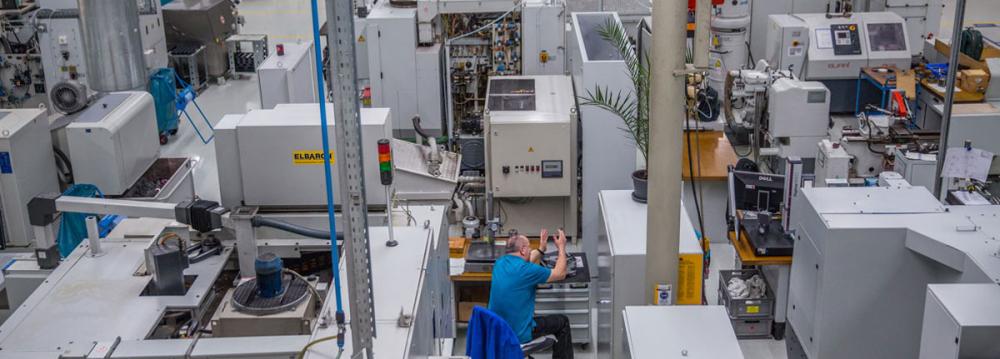German industrial output posted its biggest monthly rise in more than six years in August, data showed on Monday.
It suggested the economy is firing on all cylinders again and set for solid growth in the third quarter, although a question about the makeup of the new government could add uncertainty, Reuters reported.
The combined production of manufacturing, construction and energy increased by 2.6% on the month after edging down by 0.1% in July, data from the economy ministry showed. That was the strongest monthly gain since July 2011 and easily beat expectations in a Reuters poll for a 0.7% rise, surpassing even the most optimistic estimate.
“These figures are very good,” Commerzbank economist Ralph Solveen said. He pointed to special factors such as plant holidays falling in July in some regions this year, meaning output was likely to come in weaker next month. “Overall, we expect solid (GDP) growth in the third quarter. Our estimate is roughly 0.6% on the quarter,” Solveen said.
Manufacturing output rose by 3.2%, its biggest rise since March 2010, as factories churned out more intermediate goods, capital goods and consumer goods in August. Energy output also rose while construction activity fell.
Manufacturers of cars and other vehicles were the main driver behind the overall surge, the ministry said, also pointing to earlier plant holidays.
The ministry said industrial production had gained momentum since the start of the year.
Solid Upswing
“The good business morale and the positive development in industrial orders point to a continuation of the solid industrial upswing,” it said.
Data published on Friday showed that strong foreign demand, especially from clients outside the eurozone, drove a bigger-than-expected jump in industrial orders in August.
ING Bank chief economist Carsten Brzeski said the strong production data provided further evidence that the economy had left its summer lull behind and returned to maximum speed. “With the expected investment program of the new government, the current cycle should be extended by another couple of years,” Brzeski added.
The German economy grew 0.7% on the quarter in the first three months of the year and 0.6% from April to June, driven by increased household and state spending as well as higher investment in buildings and machinery.
Leading economic institutes have raised their growth forecast for the German economy to 1.9% in 2017 and 2% in 2018.
The German government will present its updated projections for GDP growth, employment and inflation on Wednesday.
“The outlook further ahead is positive too, with domestic demand supported by low unemployment and still loose monetary policy and the global environment supportive,” Capital Economics analyst Jennifer McKeown said.
The economy might even benefit from a small post-election fiscal boost, McKeown said, adding she expected German GDP to rise by an even stronger rate of 2.3% this year.
The biggest risks to Germany’s upswing come from the outside, Brzeski said, pointing to geopolitical risks, the stronger euro and a possible slowdown of the US economy as a result of further absence of tax relief or investment programs.
Other risks include a slowdown of the British economy due to the continuing Brexit uncertainty and China’s transition from an important export destination to a serious competitor, he added.
Following a summer lull, “hard” economic data in Germany were back in line with business, consumer and investor confidence indicators that continue to point to further growth, Brzeski said.
“The German economy is powering ahead,” he said, arguing that drawn-out coalition talks in Berlin after last month’s general election should be “no obstacle to strong growth”.
Schauble Warning
Wolfgang Schauble, the outgoing German finance minister, has warned that spiraling levels of global debt and liquidity present a major risk to the world economy.
“Economists all over the world are concerned about the increased risks arising from the accumulation of more and more liquidity and the growth of public and private debt,” Schauble said.
Schauble, who has steered the German economy for the past eight years, said there was a danger of “new bubbles” forming due to the trillions of dollars that central banks have pumped into markets.
The Europhile also warned of risks to stability in the eurozone, particularly those posed by bank balance sheets burdened by the post-crisis legacy of non-performing loans.


